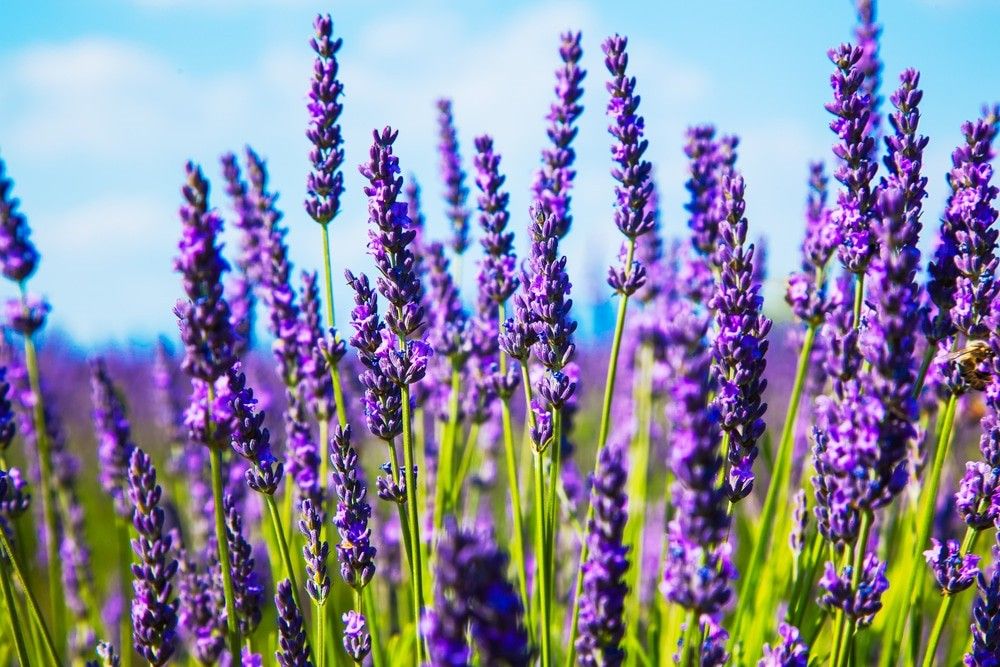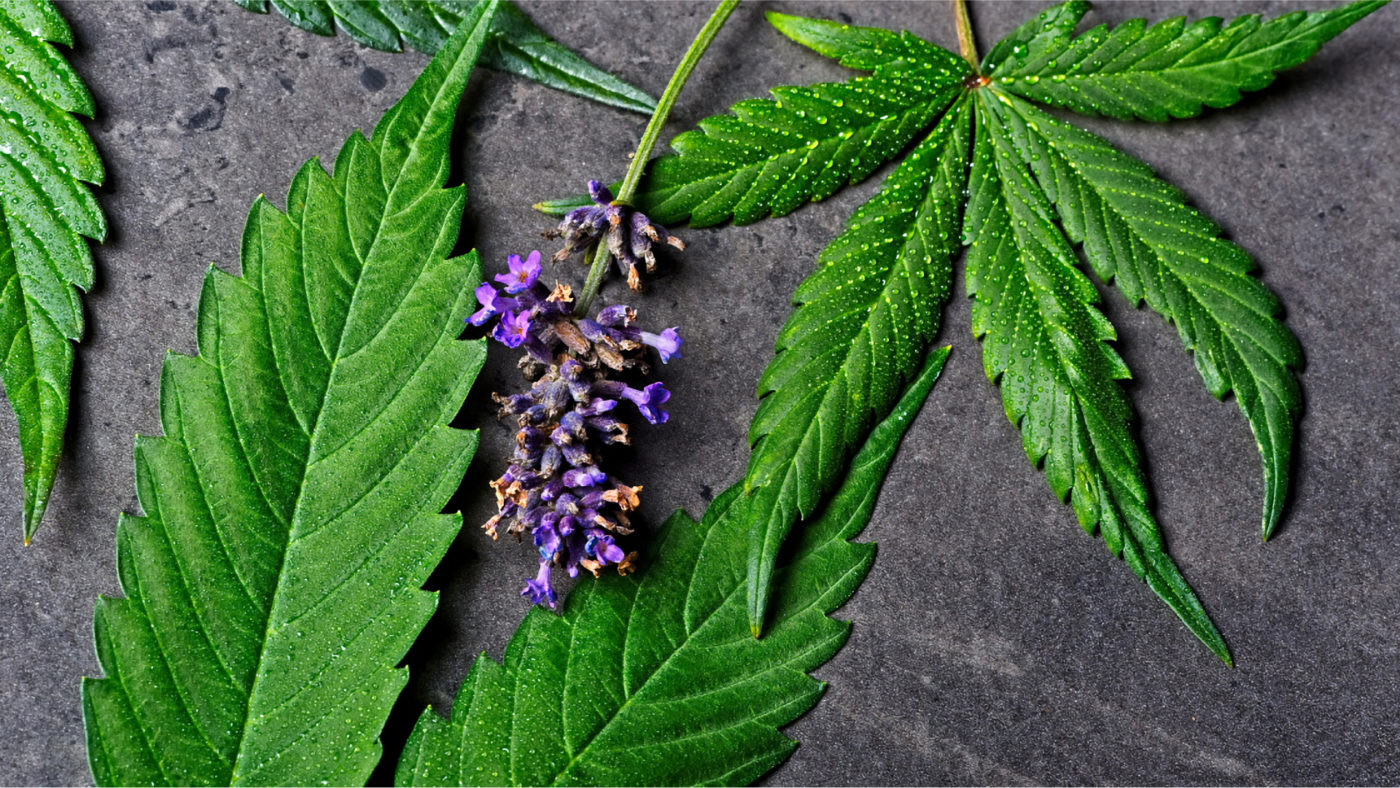Linalool, a versatile terpene known for its soothing aroma and potential therapeutic benefits, has captured the interest of those exploring natural compounds.
In this article, we delve into the frequently asked questions about linalool, its diverse effects, and its presence in various botanical sources. From its aromatic profile to its potential impacts on health and relaxation, we'll uncover the essential aspects of this captivating compound.
What is the Linalool Terpene?
Linalool, a naturally occurring monoterpene, is a renowned aromatic compound found in various flowers and herbs. Its distinct scent, reminiscent of lavender with subtle citrus undertones, is not only a signature fragrance but also a source of numerous potential health benefits.
Linalool is one of over 200 terpenes present in the cannabis plant, contributing to its unique aroma and offering a range of medicinal advantages.
While most famous for its association with the lavender plant, linalool is widely distributed throughout nature. It lends its aromatic presence to a diverse array of plants, including citrus fruits, mint, rosewood, bay leaf, basil, coriander, and cinnamon. Apart from its aromatic charm, linalool serves as a significant component in the formulation of cosmetics, skincare products, and even certain food items.
Its inclusion is not solely for its pleasant fragrance; linalool is believed to possess various beneficial properties, including relaxation and calm-promoting effects. It's also recognized for its potential antimicrobial and anti-inflammatory attributes.

What Does Linalool Do?
Linalool, the aromatic terpene renowned for its lavender-like fragrance, boasts a range of actions and effects that have piqued the interest of researchers and enthusiasts alike. From promoting relaxation to potential health benefits, linalool's influence extends far beyond its captivating scent
Emerging research suggests linalool's involvement in potentially treating and preventing Alzheimer's disease. Additionally, it appears to contribute to reducing brain plaques and tangles associated with cognitive decline.
In essence, linalool transcends its aromatic charm and delves into an array of potential benefits, from its anxiety-reducing and stress-relieving effects to its antimicrobial and anti-inflammatory actions.
Whether through its presence in cannabis strains or its utilization in skincare and aromatherapy, linalool's multifaceted nature continues to captivate both researchers and individuals seeking its potential benefits.
Which Strains Contain the Most Linanool?
High levels of Linanool strains are typically associated with the experience of a fast-acting and heavy high. The strains that have the highest amount of Linanool are:
|
Strain |
Description |
Additional Information |
|---|---|---|
|
Amnesia Haze |
Sativa-dominant hybrid known for its uplifting and cerebral effects. Has a spicy, lemony flavor. |
Boosts creativity and energy. Provides an uplifting, euphoric head high. |
|
LA Confidential |
Indica-dominant hybrid that provides a mellow, relaxing high. Has a sweet, floral aroma. |
Induces a peaceful, stress-relieving body buzz. Eases insomnia and restlessness. |
|
Skywalker OG |
Indica-dominant hybrid with potent, sedative effects. Flavor is spicy and herbal. |
Provides deep physical relaxation and sleepiness. Best used in the evening. |
|
Granddaddy Purple |
Famous indica with a berry flavor and psychoactive high. Provides pain relief. |
Alleviates pain, spasms, and muscle tension. Induces a blissful mental euphoria. |
|
Banana Kush |
Indica-leaning hybrid with tropical, banana-like aroma. Provides full-body relaxation. |
Eases anxiety while delivering happy, uplifting effects. Great for daytime use. |
Linanool Terpene: Roles and Effects
In the intricate tapestry of nature's scents and compounds, linalool emerges as a terpene of remarkable significance. Its alluring fragrance, reminiscent of lavender's delicate charm, belies a range of effects that extend far beyond its captivating aroma.
From its role in shaping the character of various plants to its potential therapeutic benefits, linalool stands as a testament to the complexities and wonders of nature's chemistry.
Linalool is a naturally occurring monoterpene, a class of aromatic hydrocarbons that contribute to the rich scents of countless plants. In the realm of cannabis, linalool shines as one of the most prevalent terpenes, leaving its aromatic imprint on various strains.
It imparts a floral, slightly citrusy note that enhances the overall olfactory profile of cannabis cultivars. This aromatic presence not only adds to the sensorial experience but also holds the key to linalool’s potential benefits, which include:
-
Anxiety relief and stress alleviation
-
Antimicrobial
-
Anti-inflammatory and pain relief
-
Cognitive enhancement
-
Aromatherapeutic
The Linalool Terpene in Cannabis: Unveiling Nature's Lavender Essence
Nestled within the intricate botanical landscape of cannabis lies a terpene of exceptional distinction - linalool. As the most abundant terpene in lavender and a key player in various plants, linalool's presence in cannabis adds a layer of aromatic elegance that goes beyond mere scent.
Its multifaceted effects and potential health benefits have captured the attention of both enthusiasts and researchers, making it a cornerstone of the cannabis experience.
Linalool's presence in cannabis elevates the aromatic experience to an artful level, inviting us into a world of soothing fragrances.
Beyond its aroma, linalool's effects - from anxiety reduction to potential cognitive benefits - weave a narrative of nature's profound wisdom. It is a terpene that not only enriches the essence of cannabis but also encapsulates the delicate yet robust interplay between aroma and well-being.
What is Linalool in Weed?
Linalool, an enchanting terpene found within the realm of cannabis, is a botanical gem that contributes both aroma and potential therapeutic benefits to the world of weed.
As a significant player among the diverse array of terpenes in cannabis, linalool is responsible for infusing strains with their distinctive floral and citrusy notes. Beyond its aromatic charm, linalool holds within it a range of effects that intrigue researchers and enthusiasts alike.
Its presence in weed adds a dimension of aromatic artistry that enhances the sensory experience. As the terpene most closely associated with lavender, linalool brings forth a fragrant symphony reminiscent of lavender's soothing elegance.
This delicate scent, often accompanied by subtle citrus undertones, bestows a unique identity upon various cannabis strains.

Is Linalool Polar or Non-Polar?
Linalool, a compound under examination in the study, can be classified as a polar molecule. This characterization stems from its molecular structure, which contains both polar and non-polar functional groups.
Linalool possesses an alcohol group (-OH), which imparts polarity due to the electronegativity difference between oxygen and hydrogen atoms. This polar characteristic allows linalool to interact with other polar molecules and compounds, affecting its behavior in various matrices such as milk.
The study's investigation of linalool's interaction with fat content in milk underscores the importance of its polarity in influencing its release and perception.
Is Linalool Safe?
Linalool is generally considered safe for use in various applications. It is commonly utilized in perfumes, cosmetics, and aromatherapy due to its pleasant floral scent. While linalool is regarded as safe when used in appropriate amounts, there are a few considerations to keep in mind.
In most cases, linalool is well-tolerated and not associated with significant adverse effects. However, some individuals might be sensitive to linalool, and contact dermatitis or skin irritation could occur when applied topically.
Furthermore, when inhaled in large concentrations, linalool's aroma might trigger respiratory discomfort for sensitive individuals.
When used within recommended concentrations, linalool is generally safe for cosmetic and aromatherapeutic purposes. As with any substance, individual sensitivities can vary, so it's advisable to perform a patch test before applying products containing linalool to larger areas of skin.
Health Benefits of Linalool
Linalool has a reputation as an ancient sedative, with a fragrance known to induce relaxation. It interacts with the parasympathetic nervous system, promoting a sense of calm and reducing anxiety symptoms.
By activating brain areas responsible for emotions and memory, linalool triggers the release of neurotransmitters like serotonin and endorphins, contributing to stress relief and improved mood.
Studies highlight linalool's ability to modulate pain perception in the brain, making it a potential pain-relieving agent. It can alleviate inflammation, swelling, and irritation, showing promise in reducing postoperative pain and even the demand for opioids during recovery.
This terpene's anti-inflammatory properties make it beneficial for addressing discomfort caused by various injuries or conditions.
Does Linanool Cause Anxiety?
While linalool holds the potential in reducing anxiety, individual responses to this terpene can vary. Some individuals might experience a noticeable reduction in anxiety symptoms due to linalool's effects on the nervous system.
However, other factors such as dosage, personal sensitivity, and the presence of other compounds in a given source of linalool can influence its impact on anxiety.
In summary, while linalool is often associated with calming effects and relaxation, its influence on anxiety is complex and context-dependent. Individual reactions may differ, and factors like source, dosage, and overall composition play a role in determining whether linalool contributes to anxiety reduction for a given individual.

Linalool and Relaxation
The calming and stress-reducing potential of linalool is instrumental in improving mood. By activating the parasympathetic nervous system, linalool helps balance the body's stress response, allowing individuals to experience a state of relaxation and emotional equilibrium.
This mood-enhancing effect can have far-reaching benefits, impacting sleep quality, overall mental well-being, and even immune function.
Aromatic Influence: How Linalool Impacts the Senses
Linalool's impact goes beyond mere aroma. As its fragrance reaches emotional centers in the brain, it triggers the release of neurotransmitters like serotonin and endorphins.
These chemical messengers are responsible for mood modulation, relaxation, and pleasure, amplifying linalool's ability to evoke positive feelings and well-being.
The aromatic influence of linalool extends to the broader concept of holistic well-being. By creating a sensory experience that fosters relaxation and emotional balance, linalool contributes to overall wellness.
Whether used in aromatherapy, personal care products, or culinary delights, linalool's scent offers a versatile tool for enhancing the sensory dimensions of our lives.
Linalool Handling and Considerations
Much like consuming a whole mango in one sitting isn't advisable, it's important to exercise moderation when dealing with linalool. Excessive intake of linalool might lead to drowsiness, underscoring the significance of adhering to recommended doses.
As is the case with any natural compound, seeking guidance from your healthcare provider before elevating your linalool consumption is prudent to ensure safe usage.
Is Linalool Toxic?
The Linalool terpene is generally regarded as safe for most individuals when employed appropriately. It aligns with responsible usage practices and is unlikely to pose significant toxicity concerns.
Is Linalool Flammable?
Yes, linalool is considered flammable. This classification underscores the importance of avoiding exposure to open flames or high temperatures when handling linalool, ensuring its safe and controlled use.
Molecular Structure: Understanding Linalool's Blueprint
Linalool’s structure, C10H18O, signifies its composition: 10 carbon (C) atoms, 18 hydrogen (H) atoms, and one oxygen (O) atom. The arrangement of hydrogen atoms within the molecule contributes to its overall structure and properties.
Linalool's hydrogen atoms play a crucial role in its interactions and chemical behavior. Its aromatic and therapeutic qualities stem from the intricate dance of these atoms within its structure, influencing its fragrance, properties, and potential benefits.

Last Words on Linalool
Linalool, a terpene with its distinct aroma and potential health-enhancing properties, continues to captivate researchers and wellness enthusiasts. Its presence in a variety of plants and its potential effects on relaxation and well-being makes it a subject of significant interest.
As scientific exploration unveils more about linalool's effects and applications, its potential to enrich sensory experiences and contribute to holistic well-being becomes increasingly evident.









